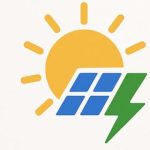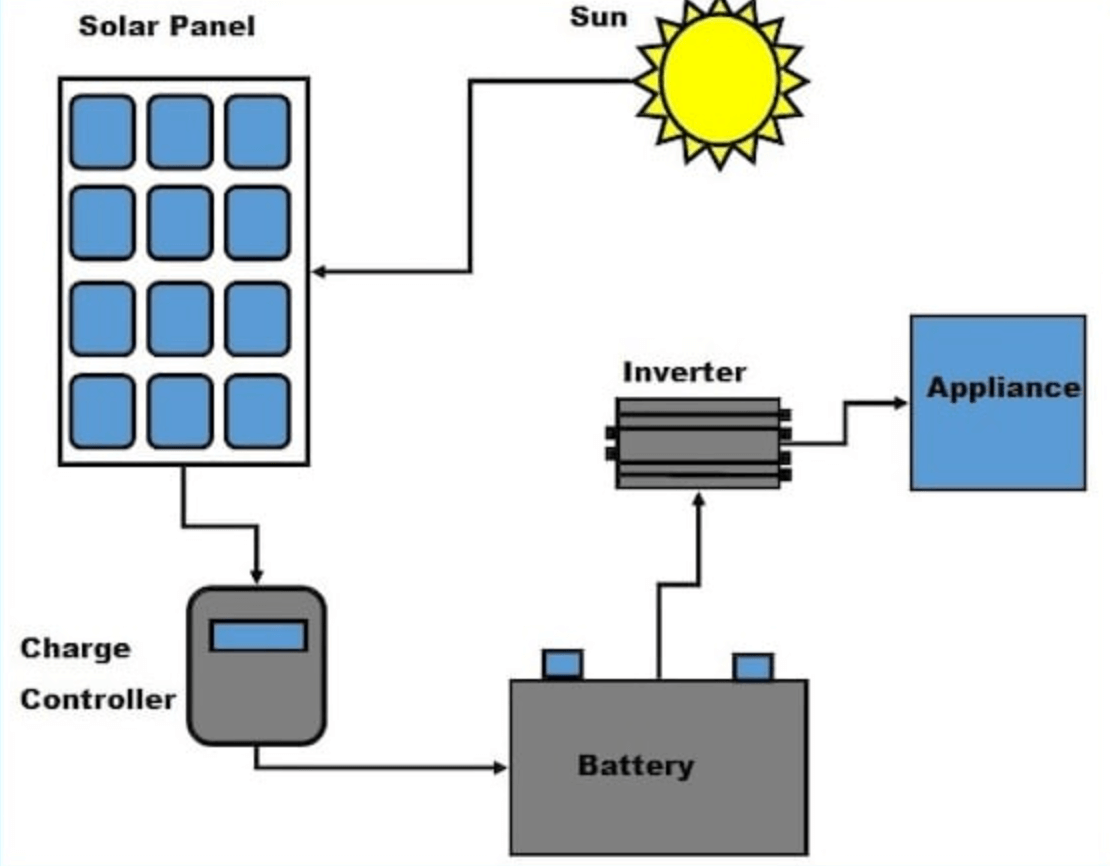I’ve worked in the solar energy industry as an engineer for more than six years and have been involved with solar projects for over 15 years.
During that time, I’ve designed everything from tiny off-grid setups with a single solar panel to large, complex arrays powering entire industrial complexes.
No matter the size or application, the core components of a solar power system are always the same. In this post, I’ll walk you through these essential parts, share professional tips, and explain what to consider when choosing each one.
What Are the Components of a Solar Power System?
Whether you’re installing a small residential array or a large commercial solar plant, every solar power system includes the following key components to ensure smooth and efficient operation.
Solar Panels
Solar panels, also known as photovoltaic (PV) modules, are the heart of any system. Each panel contains many solar cells that capture sunlight and convert it into direct current (DC) electricity through the photovoltaic effect.
My pro tips when selecting panels
- Warranty period: Look for at least a 20–25-year performance warranty.
- Temperature coefficient: Lower is better for hot climates.
- Efficiency rating: Higher efficiency means more power per square meter.
- Wattage output: Match the watt rating to your total energy goals.
There are many reliable solar panel manufacturers. Your choice will depend on the project type. Industrial, commercial, or residential, these four factors matter most.
Solar Inverter
The solar inverter is the system’s brain. It converts the DC electricity from your panels into alternating current (AC), the standard electricity used by homes and businesses. Without it, you can’t run household appliances or feed power back to the grid.
When I design a system, I pay special attention to.
- Inverter capacity to match the total panel output.
- Type of inverter: string, micro-inverter, or hybrid depending on shading and backup needs.
- Warranty and monitoring features for long-term reliability.
Solar Batteries (Optional but Powerful)
Solar batteries store excess electricity generated during the day so you can use it at night or during cloudy weather.
They provide energy independence and backup power, which is invaluable if you live in an area with frequent outages.
However, batteries add significant cost. In many of my designs, batteries accounted for 45%–50% of the total system price.
That’s why I recommend adding batteries only if you truly need off-grid capability or reliable backup and can afford the investment.
Distribution Board (Electrical Panel)
The distribution board, also called the electrical panel or breaker box, connects your solar power system to your home’s wiring. It distributes electricity to different circuits and protects them with circuit breakers or fuses.
In grid-tied systems, this is also where your solar setup connects to the utility grid, allowing you to export surplus power and receive net-metering credits.
Additional Helpful Components
While the four core elements above are essential, a complete solar system usually includes:
- Mounting and racking equipment to secure panels safely.
- Monitoring systems (software or hardware) to track production and detect issues.
- Wiring and safety disconnects for proper electrical connections and maintenance.
FAQ: Components of a Solar Power System
What are the main components of a solar power system?
Solar panels, a solar inverter, an optional battery bank, and a distribution board (breaker box). Mounting hardware, wiring, and monitoring equipment are also standard.
What are the basic parts of solar power?
At minimum: PV panels to capture sunlight, an inverter to convert DC to AC, and wiring/distribution to deliver electricity where it’s needed.
What are the components of a solar-powered calculator?
A mini PV cell (tiny solar panel), an internal battery or capacitor for storage, and an electronic circuit to power the display and functions.
What are the components of a commercial solar system?
The same core elements, panels, inverters, batteries (if required), and distribution boards—scaled up for higher capacity.
Commercial setups may also include multiple inverters, advanced monitoring, and more extensive racking systems.
Final Thoughts
From small home arrays to massive industrial plants, the components of a solar power system never really change.
As someone who has designed systems for more than 15 years, I can tell you that choosing high-quality parts, especially panels and inverters, pays off in reliability and long-term savings.
If you’re planning your own installation, use this guide as a checklist. Get the fundamentals right, and your solar investment will deliver clean energy for decades.

